California Poppy Seed ( Annual )
The California poppy, or Eschscholzia californica, is the state flower of California. Known for its bright orange color, this North American native wildflower can also be found in shades of pink, yellow, red and white. California poppies can reach heights of 12 to 18 inches and bloom throughout the summer months.
California poppies are best propagated from seed. Although they can be propagated through transplantation, it is hard to do, and often times the plants do not survive the process. If you must start indoors, use deep pots. Sow seeds in the early spring once the ground reaches 60 degrees Fahrenheit and is workable. Choose an area that receives full sun, at least six hours of sunlight, and has well-draining poor soils. Mix the seeds with 4 parts sand to ensure even spacing. Cover the seeds with 1/16 inch of soil. Water immediately after sowing and keep the soil moist until the seedlings develop their first leaves.
Reduce watering of California poppies once they become established. Water plants one or two times per week only during periods of no rainfall. They are highly drought-tolerant and will suffer if kept too moist. Problems such as powdery mildew or mold will form on the plants' leaves if excessive watering is prolonged. Their roots will begin to rot and die back, affecting the health of the plant. If rainfall occurs, do not provide additional water.
California poppies prefer poor soils. If sown in areas where the soil is too rich and fertile, the poppies will produce foliage with few flowers. Fertilize California poppies only when they appear to be unhealthy with yellow leaves. Apply a 10-10-10 nitrogen, phosphorous and potassium fertilizer at the recommended rate on the label. Do not fertilize California poppies under any other circumstance, as excess fertilization will stop blooming and can harm the plants.
Blooms will begin to appear on your poppies one and a half to two months after sowing. Normal bloom time lasts for six to eight weeks. Pinch blooms from their stems as they begin to fade to encourage new blooms to form. This practice can prolong the blooming period of California poppies by one to two additional weeks.
Leave a few of the last blooms on the stems in order to encourage seed production. The petals will drop leaving a seed head behind. Remove the seed head from the stem once dry in zones 1 through 4. Store the harvested seed heads in glass jars or paper envelopes in a dark, dry and cool spot until spring sowing. Allow the dried seed heads to remain on the stems in zones 5 through 9. In these zones, the California poppies will self-sow their seeds.
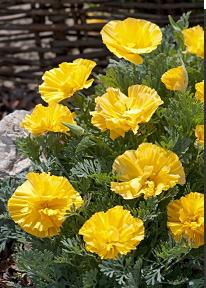
Low germination on this variety, normally about 60 percent.
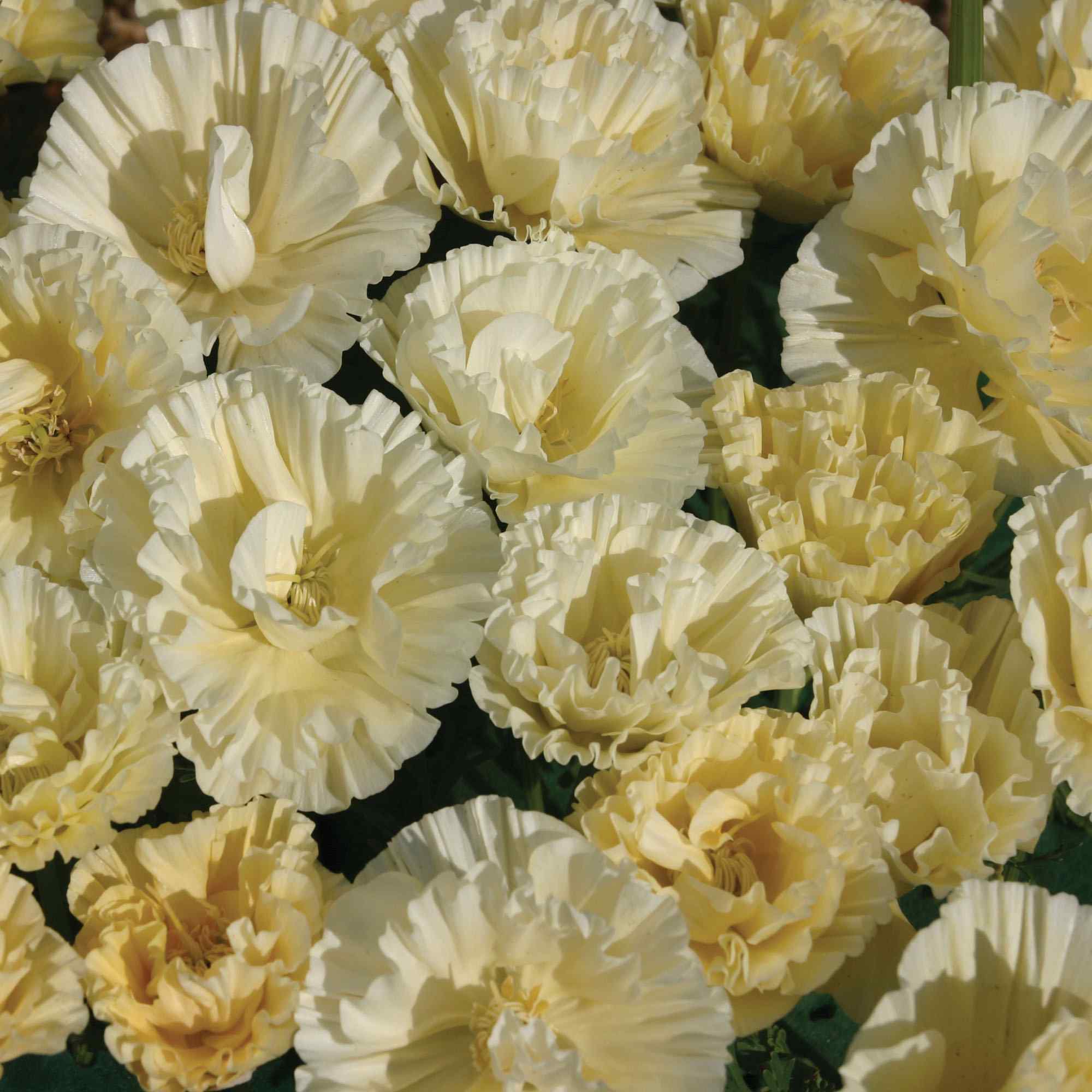
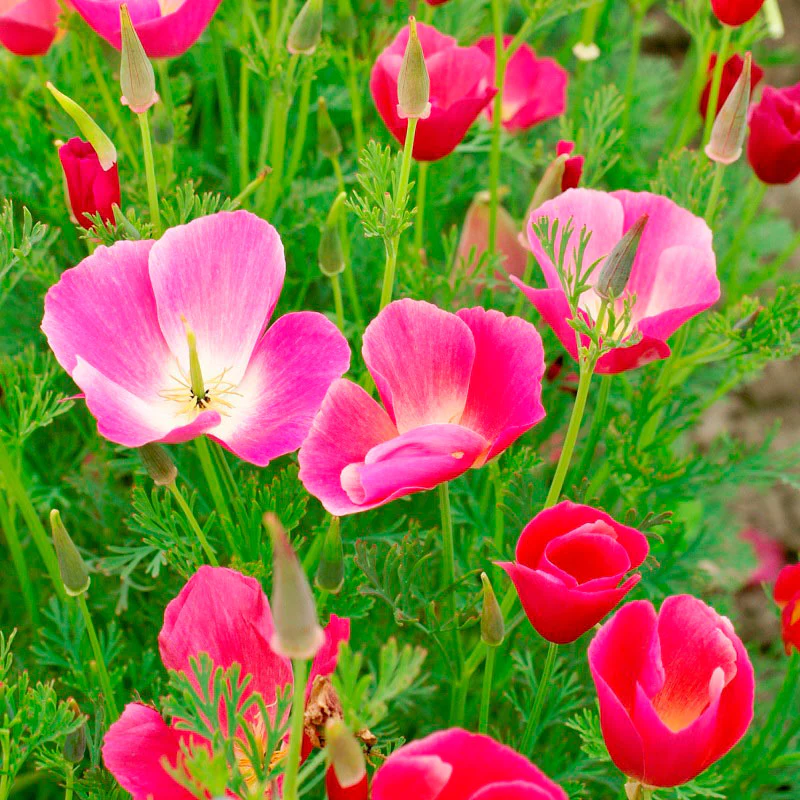
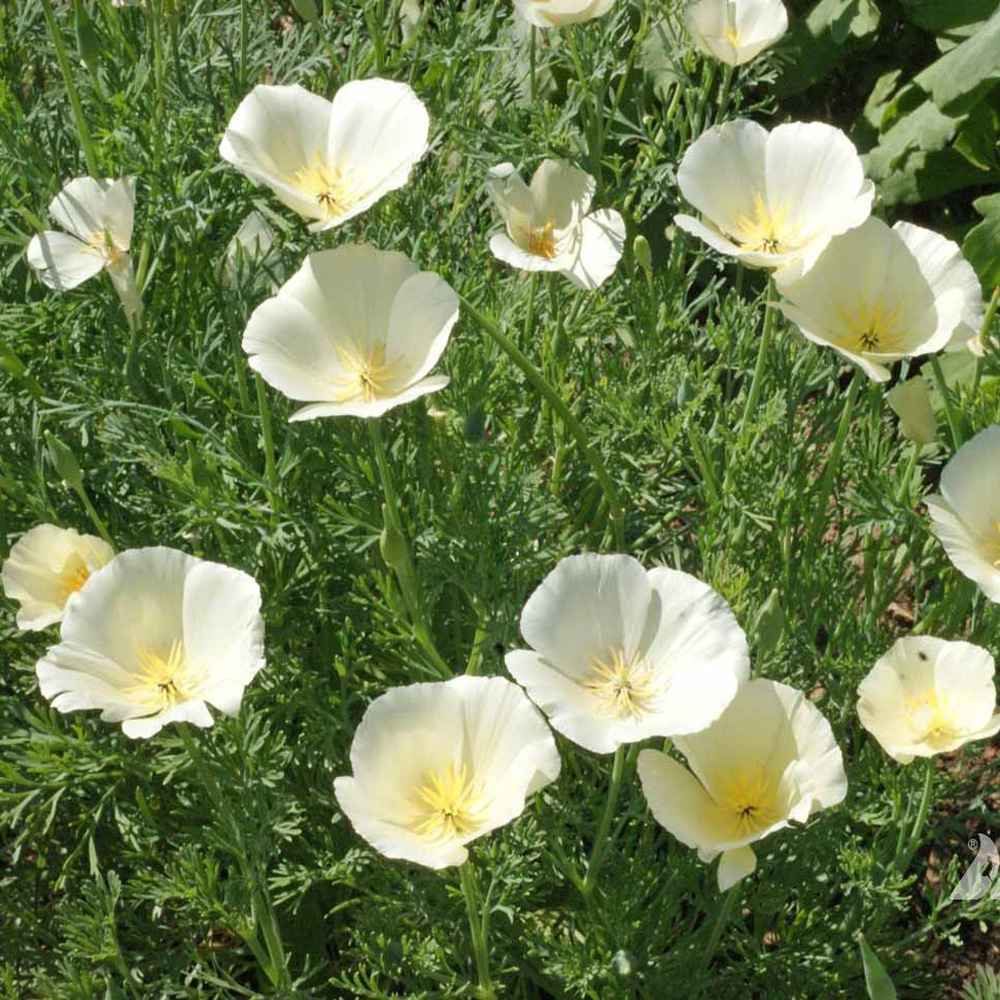
White Linen California Poppy will produce creamy white flowers that measure 2 or 3 inches wide in diameter. The plants will grow to a mature height of roughly 12 to 18 inches tall.
Grown as a tender perennial, they attract an array of beneficial insects to the garden, such as butterflies, bumblebees, honeybees and more.
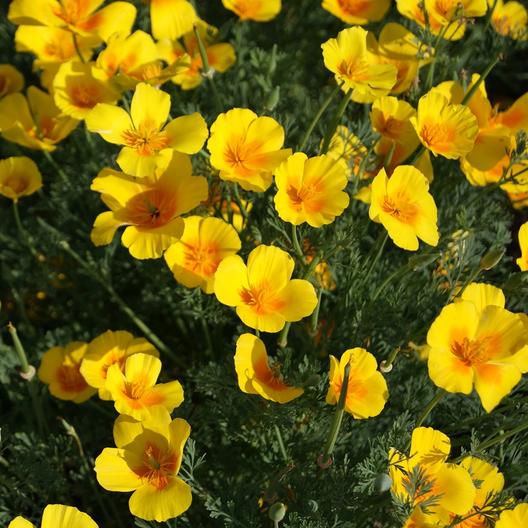
When planted in mass groupings, these have tremendous visual appeal.
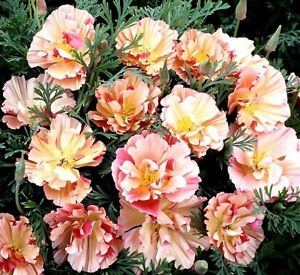
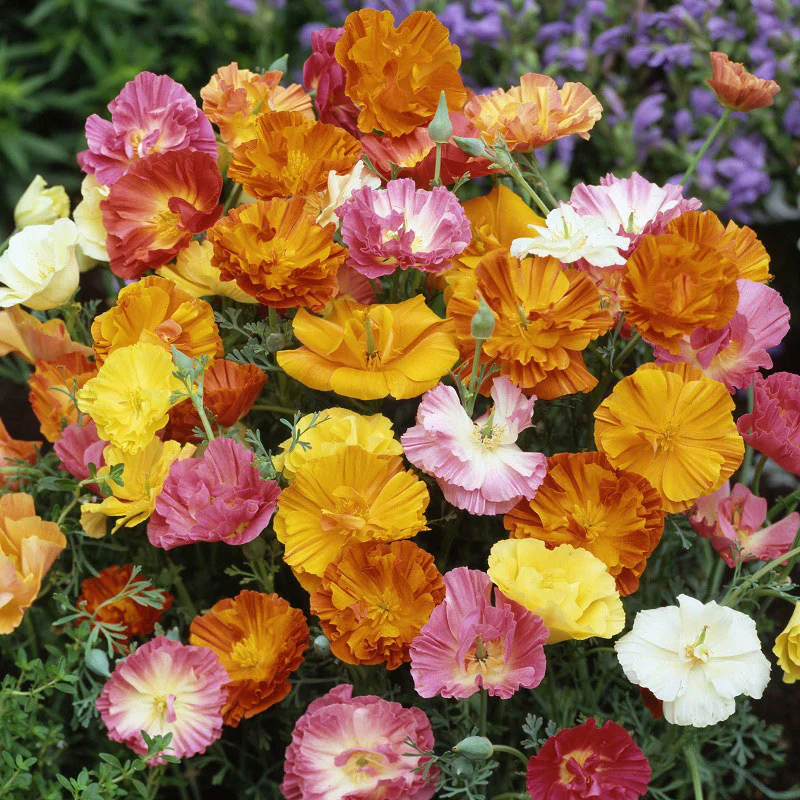
Superb in meadows, native gardens or naturalized settings, this California Poppy mix is easy to grow from flower seeds and requires virtually no care or water. This Ballerina Poppy mix has very finely divided leaves that are pale bluish-green. The funnel-shaped, double and semi-double flowers are satiny and cheerful, growing to 2 inches wide. California Poppies are highly drought tolerant and tend to perform well in just about any environment, even arid and inhospitable ones.
Known for being a liberal self-sower, California Poppies very freely drop their own Poppy flower seeds. When Ballerina flowers are planted in mass groupings, the visual appeal is amazing. These versatile flowers are also great as border plants around a group of larger flowering plants. Perfect for xeriscaping.
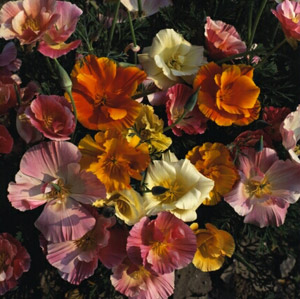
( Eschscholzia californica )
Seedman Basic Info:
A Classic Heirloom Favorite. Grows about 12 inches tall. Easy to grow, plant them directly in your garden and they will spread easily!
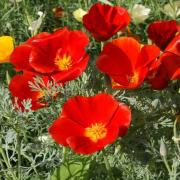
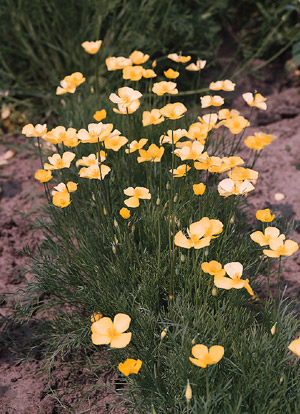
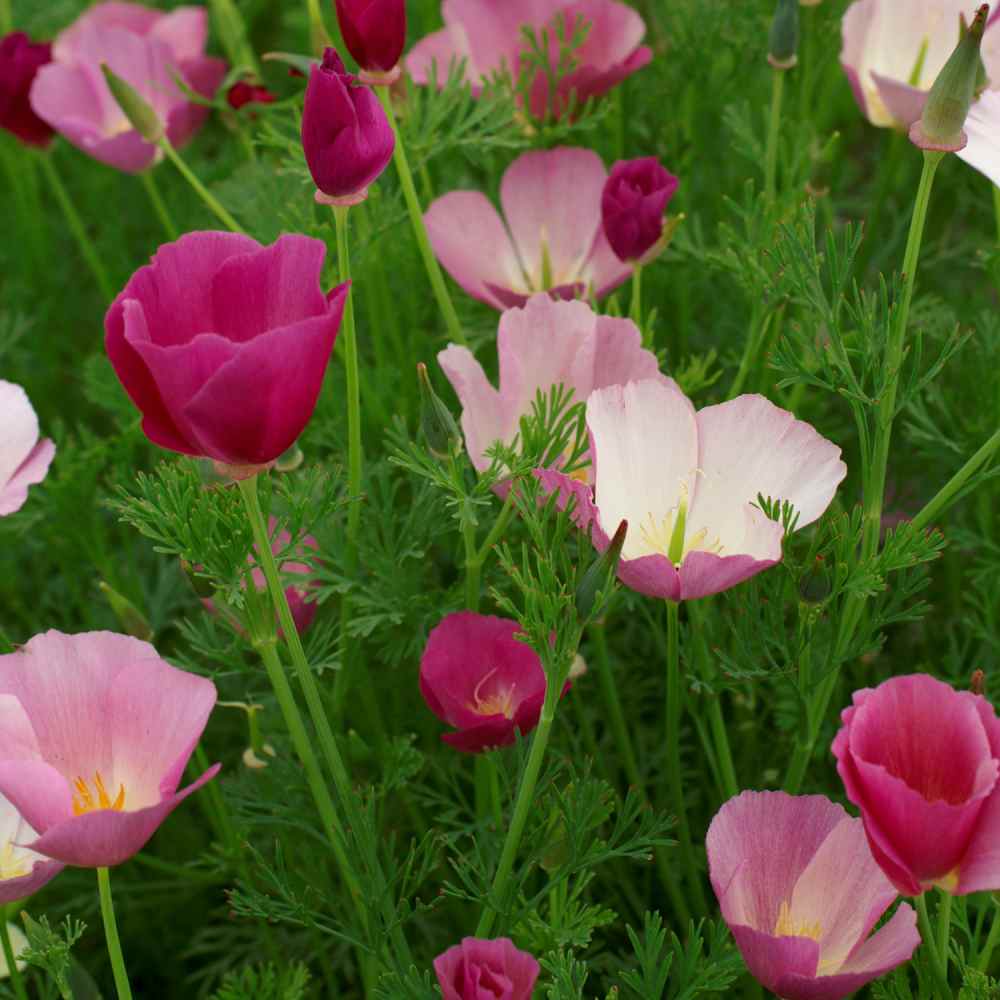
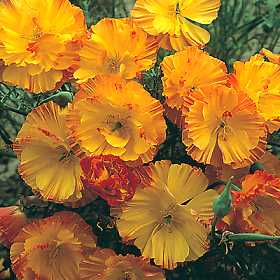

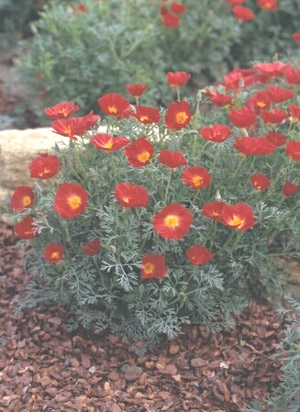
Birds are attracted to the seeds. Foliage is silvery blue. Bloom time: spring-summer. Bloom color: fiery red with bright yellow eyes. Grows about 8" tall. Hardy to zone 6.
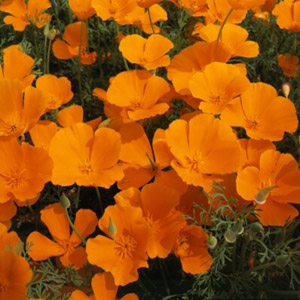
The bright orange California Poppy wildflower was named for doctor-naturalist Johann Friedrich Gustav von Eschscholtz who was the surgeon for the Russian expedition team that dropped anchor in San Francisco in 1815 in a bay surrounded by hills covered with the golden flowers. The wild flowers were designated the state flower of California in 1903, and now are protected by state law prohibiting anyone from picking or destroying them when they are growing on public property. These Poppy flowers close at night or in cold, windy weather and open again the following morning, although they may remain closed in cloudy weather.
California poppies attract butterflies and many different types of bees, including bumblebees, honeybees, and sweat bees!
Despite its mild-weather origins, California Poppy seeds will grow quite well in cold climates, but only as an annual. Poppies can be used in beds, borders, and in naturalized settings, but generally they do not do well in containers. The foliage is attractive, finely divided and lacy with a bluish-green color.
The Poppy plants require full sun and good drainage to flourish, so they are particularly well-suited to rock gardens and dry, sandy soils. Because the plants develop a deep taproot they do not transplant well, and therefore the wildflower seed should be seeded directly in the garden where you want them to grow.
Height: 12 - 16 inches. USDA Zones: 3 - 9. Season: Annual. Deer Resistant: Yes

This is a two part water soluble product that should be mixed 14.75cc of each part ( we provide measuring spoon with solution } to one gallon of water and sprayed onto the foliage of the plants. It contains Food Grade H202, ( produced by nature ) Gibberellic Acid ( a natural plant growth hormone ), B1 and other plant vitamins, plant hormones, ( made from natural sources ) micronutrients including Boron (B), Copper (Cu), Iron (Fe), Manganese (Mn), Molybdenum (Mo), Sulfur (S) and Zinc (Zn) plus a natural detergent based "sticker" that makes the product stick to the leaves until absorbed by the plant.
This mix will make 16 gallons of solution.
Sowing and Care Instructions for Eschscholzia Species:
Sow on cultivated soil. Can be fall planted in California, but should be Spring planted in cooler zones. Plants are easy to grow, but do not like to be transplanted. Sow in place when possible. Prefers sunny spot with well drained soil.

